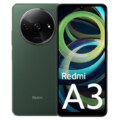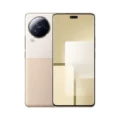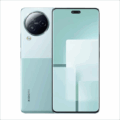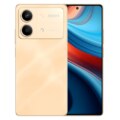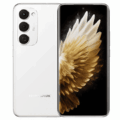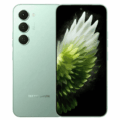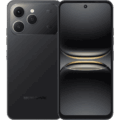Xiaomi Redmi 9A
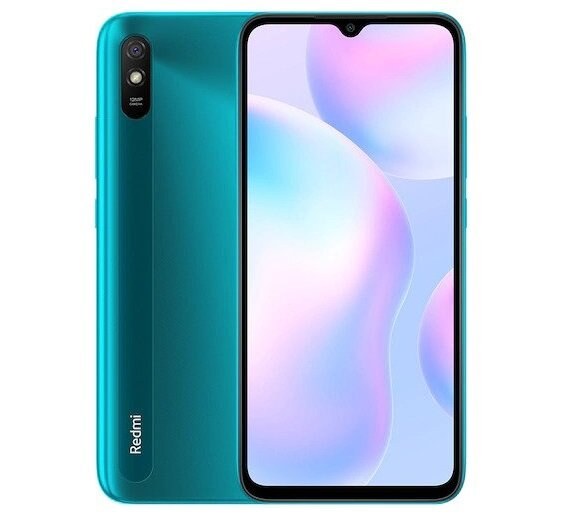
The Xiaomi Redmi 9A succeeds the Redmi 8A from 2019 and serves as a smaller variant of the standard Redmi 9. It is powered by the mediatek Helio G25 processor, an octa-core CPU with cores clocked at up to 2.0 GHz. The device features a 6.53-inch IPS LCD display with a resolution of 720 x 1600 pixels and a dewdrop notch housing the front camera.
The Redmi 9A is equipped with the powervr GE8320 GPU for graphics processing. It is indeed available in multiple configurations, including 2GB, 3GB, 4GB, and 6GB of RAM, paired with 32GB, 64GB, or 128GB of internal storage. Storage can be expanded via a dedicated microSD card slot, allowing users to increase capacity without sacrificing SIM card functionality.
In terms of imaging, the phone has a single rear camera with a 13-megapixel sensor and an LED flash. The front-facing camera is a 5-megapixel sensor designed for selfies and video calls. The device does not include a fingerprint sensor; instead, it supports face unlock through the front camera and standard Android security options.
connectivity options include dual nano-SIM slots with 4G LTE support on both SIMs. The Redmi 9A runs on Android 10 with Xiaomi’s MIUI 12 interface pre-installed. Powering the device is a 5000mAh battery, which supports 10W charging via a microUSB port. The phone includes standard sensors such as an accelerometer, proximity sensor, and ambient light sensor.
Full Specifications
NETWORK
| Technology | GSM / HSPA / LTE |
| 2G Network Bands | GSM 850 / 900 / 1800 / 1900 - SIM 1 & SIM 2 |
| 3G Network Bands | HSDPA 850 / 900 / 1800 / 1900 / 2100 |
| 4G Network Bands | LTE band 1(2100), 3(1800), 5(850), 8(900), 28(700), 38(2600), 40(2300), 41(2500) |
| Speed | HSPA 42.2/5.76 Mbps, LTE-A (2CA) Cat6 300/50 Mbps |
LAUNCH
| Also Known As |
- - |
BODY
| Dimensions | 164.9 x 77.1 x 9 mm |
| Weight | 196 grams |
| Build | Glass front (Gorilla Glass 3) |
| SIM Type | Dual SIM (Nano-SIM, dual stand-by) |
DISPLAY
| Display Type | IPS LCD capacitive touchscreen, 16M colors |
| Size | 6.53 inches, 102.9 cm2 (~81.0% screen-to-body ratio) |
| Resolution | 720 x 1600 pixels, 20:9 ratio (~269 PPI density) |
PLATFORM
| Operating System | Android 10, MIUI 12 |
| Chipset | MediaTek Helio G25 (12 nm) |
| CPU | Octa-core 2.0 GHz Cortex-A53 |
| GPU | PowerVR GE8320 (650 MHz) |
MEMORY
| RAM + ROM | 2/3/4/6 GB |
| Card Slot | Yes, up to 256 GB via microSD card (uses dedicated slot) |
MAIN CAMERA
| Camera Type | Single Lens |
| Camera Sensor(s) | 13 MP Main camera |
| Camera Features |
Autofocus Continuous shooting Digital zoom Geotagging Panorama HDR Touch focus Face detection Self-timer Scene mode |
| Video Resolution | 1080@30fps, 720p@30fps, |
SELFIE CAMERA
| Camera Type | Single Lens |
| Camera Sensor(s) | 5-megapixel, f/2.2 aperture |
| Camera Features |
FaceID, HDR, 6-level AI face Beauty |
| Video Resolution | 720p@30fps |
SOUND
| Loudspeaker | Yes |
| Speaker Location | Chin, below display |
| Audio Jack Type | Yes, 3.5mm audio jack |
CONNECTIVITY
| Bluetooth | Bluetooth 5.0, A2DP, LE |
| NFC | |
| GPS | Yes, with A-GPS, GLONASS, GALILEO, BDS |
| FM Radio | Yes, FM Radio |
BATTERY
| Battery Capacity | Non-removable Li-Po 5000 mAh battery |
| Wireless Charging | No |
| Talk Time Talk Time is the longest time that a single battery charge will last when you are constantly talking on the phone under perfect conditions, Ambient temperature and highly dependent on the cellular network environment such as the distance to the closest cell network tower. | Up to 38 hours |
| Stand-by | Up to 580 hours |
OTHER FEATURES
| Sensors | Fingerprint (side-mounted), accelerometer, proximity, compass |
| Box Contents | Charging Brick / USB cable |
User Reviews
Leave a Reply
Disclaimer Note
Note: Specifications may not be 100% accurate.



